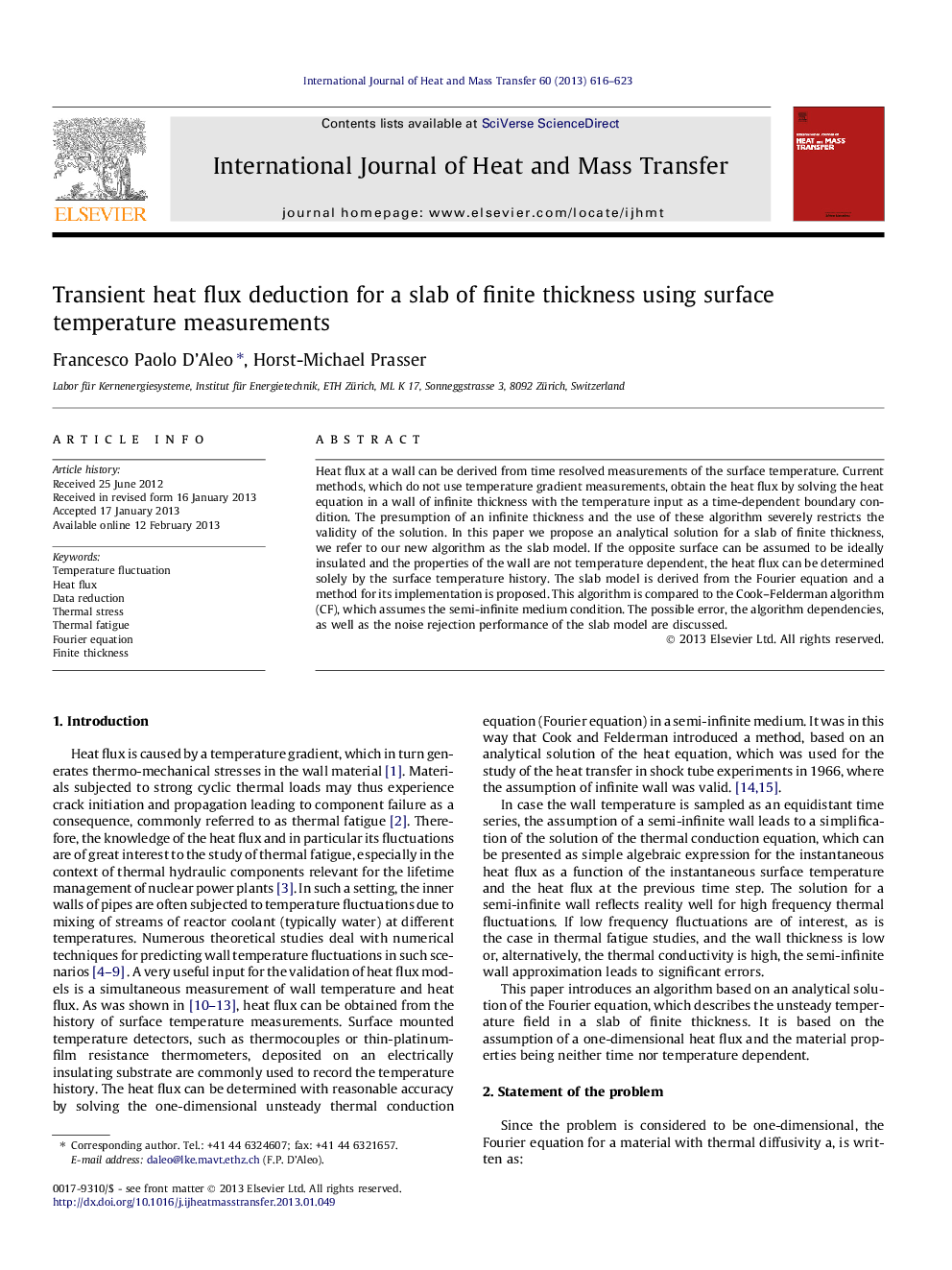| Article ID | Journal | Published Year | Pages | File Type |
|---|---|---|---|---|
| 658334 | International Journal of Heat and Mass Transfer | 2013 | 8 Pages |
Abstract
Heat flux at a wall can be derived from time resolved measurements of the surface temperature. Current methods, which do not use temperature gradient measurements, obtain the heat flux by solving the heat equation in a wall of infinite thickness with the temperature input as a time-dependent boundary condition. The presumption of an infinite thickness and the use of these algorithm severely restricts the validity of the solution. In this paper we propose an analytical solution for a slab of finite thickness, we refer to our new algorithm as the slab model. If the opposite surface can be assumed to be ideally insulated and the properties of the wall are not temperature dependent, the heat flux can be determined solely by the surface temperature history. The slab model is derived from the Fourier equation and a method for its implementation is proposed. This algorithm is compared to the Cook-Felderman algorithm (CF), which assumes the semi-infinite medium condition. The possible error, the algorithm dependencies, as well as the noise rejection performance of the slab model are discussed.
Keywords
Related Topics
Physical Sciences and Engineering
Chemical Engineering
Fluid Flow and Transfer Processes
Authors
Francesco Paolo D'Aleo, Horst-Michael Prasser,
